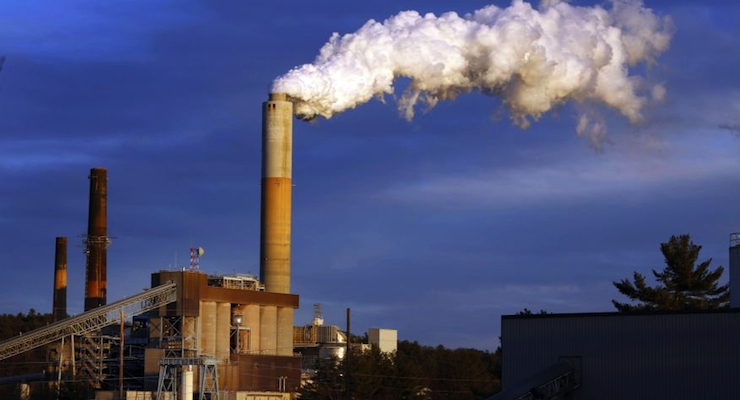

Jan. 20, 2015: A coal-fired power plant, Merrimack Station in Bow, N.H. (Photo: AP)
The Obama administration plans to impose the most severe cuts to power plant emissions to date in his pursuit of climate change, the White House confirmed Sunday. The initial plan mandated a 30 percent nationwide cut in carbon dioxide emission by 2030, using 2005 levels as a baseline. However, the actual plan will require a 32 percent cut, instead.
The White House argues they had extensive consultations with environmental groups and the energy industry, but industry opponents disagree and vow to sue the Environmental Protection Agency (EPA) immediately. The Electric Reliability Coordinating Council, which represents energy companies, said 20 to 30 states were poised to join with industry in suing over the rule and will ask the federal court to block the rule until the lawsuit is decided. Senate Majority Leader Mitch McConnell, R-Kty., has already begun to urge Republican governors across the country not to comply.
The new, more draconian version granted states an additional two years to comply with the cuts, according to White House officials, which they say was a response to complaints that the original deadline was too soon. The new deadline is set for 2022, and states will also have until 2018 instead of 2017 to submit their plans for how they intend to meet the mandated cuts. Not only are the regulations even more steep than previously expected, but come only two months after the latest in what has been a series of defeats at the Supreme Court.
In June 2014, the Supreme Court ruled to restrict and place limits on the unilateral Obama administration regulation already in place to limit power plant and factory emissions. The high court held that the Obama administration exceeded its statutory authority when they increased regulations on stationary facilities that exclude greenhouse gases, which the left blames for global warming, or now referred to as climate change.
While the decision was a huge setback for the Obama administration, executive power and to the Environmental Protection Agency, it did not directly impact the highly controversial EPA rule finalized this week, which set the first-ever national standards for new and existing power plants. Shortly after the initial proposal to mandate a 30 percent emissions reduction by 2030 was announced, a review by the Chamber of Commerce found it would will kill 224,000 jobs every year through the year 2030, and would impose $50 billion in annual costs. This past June, the Supreme Court did rule on a relevant case that could present the president with a serious problem.
In Michigan v. EPA, the court ruled it was not “appropriate and necessary” for the administration and the EPA to regulate such emissions by imposing billions of dollars of economic costs in return for a few dollars in health or environmental benefits.
“EPA must consider cost — including cost of compliance — before deciding whether regulation is appropriate and necessary,” Justice Scalia wrote. One would not say that it is even rational, never mind ‘appropriate,’ to impose billions of dollars in economic costs in return for a few dollars in health or environmental benefits.”
The Obama administration initially predicted emissions limits would cost up to $8.8 billion annually by 2030, but argued those costs would be far outweighed by health savings from fewer asthma attacks. as well as other benefits. The actual, updated price tag is unknown until states decide how they’ll reach their targets. What is known, and conceded by the administration, is the projected increase in electricity prices across the nation. On average, Americans will see at least 4.9 percent in cost increases by 2020 as coal-fired power plants will be forced to close.
The most damning journalistic sin committed by the media during the era of Russia collusion…
The first ecological study finds mask mandates were not effective at slowing the spread of…
On "What Are the Odds?" Monday, Robert Barnes and Rich Baris note how big tech…
On "What Are the Odds?" Monday, Robert Barnes and Rich Baris discuss why America First…
Personal income fell $1,516.6 billion (7.1%) in February, roughly the consensus forecast, while consumer spending…
Research finds those previously infected by or vaccinated against SARS-CoV-2 are not at risk of…
This website uses cookies.